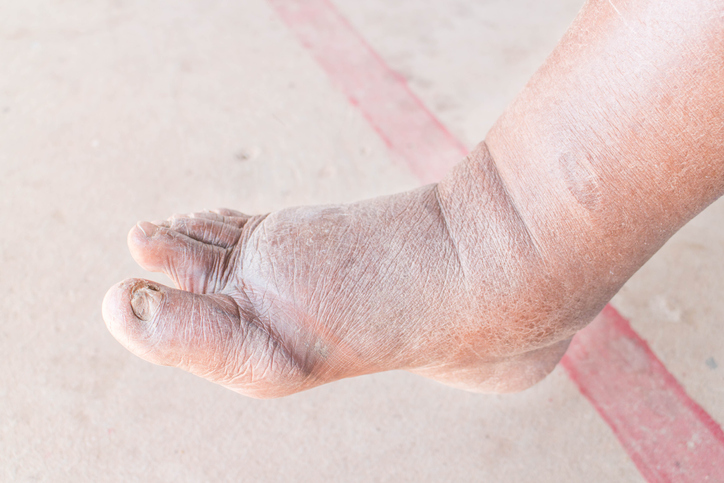Pain
Diagnosing Diabetes Insipidus (DI)

What is diabetes insipidus?
Diabetes insipidus (DI) is a rare medical condition that causes an imbalance of fluids in the body, resulting in extreme thirst and excessive urination. While most people urinate between 1 and 2 quarts daily, those with DI can pass as much as 20 quarts of urine per day. The excreted urine is heavily diluted, making it colorless and odorless. It is estimated that only one in every 25,000 people are diagnosed with DI.
Diabetes insipidus should not be confused with the more common diabetes mellitus (DM). Diabetes mellitus affects blood sugar; whereas, diabetes insipidus does not. However, both can cause frequent urination and thirst.
Diagnosing diabetes insipidus
The diagnostic process for diabetes insipidus begins with a physical exam and a thorough medical history. Additional testing may include the following:
Fluid deprivation testing
A fluid deprivation test monitors changes in body weight, urine output, urine concentration and blood sodium after fluids are restricted for several hours. The hypothalamus (a region of the brain) makes a hormone called vasopressin, or antidiuretic hormone (ADH), which is stored in the pituitary gland at the base of the brain; this hormone helps manage how quickly or slowly fluids are excreted from the body. A physician may measure ADH blood levels or give a synthetic ADH during this test to determine if the body is producing enough ADH or if the kidneys are properly responding to ADH. There are two types of fluid deprivation tests:
- A short-term fluid deprivation test involves collecting a urine sample after fluid has been withheld for a short period of time.
- A formal fluid deprivation test is performed in a hospital setting to ensure dehydration does not occur. The individual being tested is weighed and has blood samples taken every one to two hours until blood pressure drops too low, rapid heartbeat occurs when standing, five percent or more body weight is lost or urine concentration increases over two or three measurements.
Magnetic resonance imaging (MRI)
An MRI can identify any abnormalities of the hypothalamus or pituitary gland. This is a noninvasive test that uses a powerful magnetic field and radio waves to obtain a detailed picture of brain tissue.
Genetic screening
Genetic screening may be ordered if close family members have diabetes insipidus or have issues with excessive urination.
Urinalysis
A urinalysis involves collecting a urine sample to check blood sugar levels and determine if the urine is diluted or concentrated. A urinalysis may require a one-time urine sample or a collective sample obtained over a 24-hour period.
Blood testing
A blood test can determine the levels of glucose and electrolytes in the blood to determine if an individual has diabetes insipidus or diabetes mellitus.


















